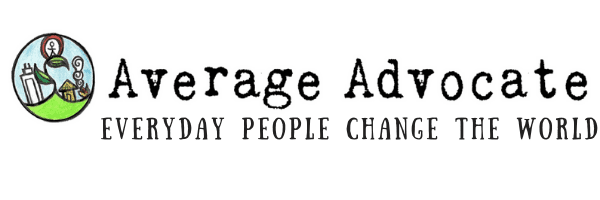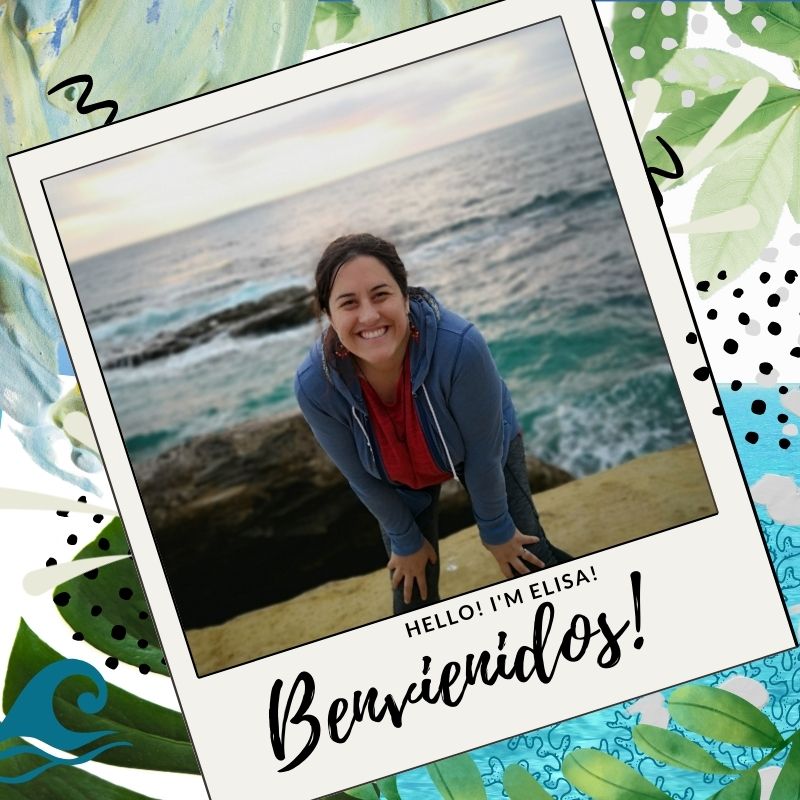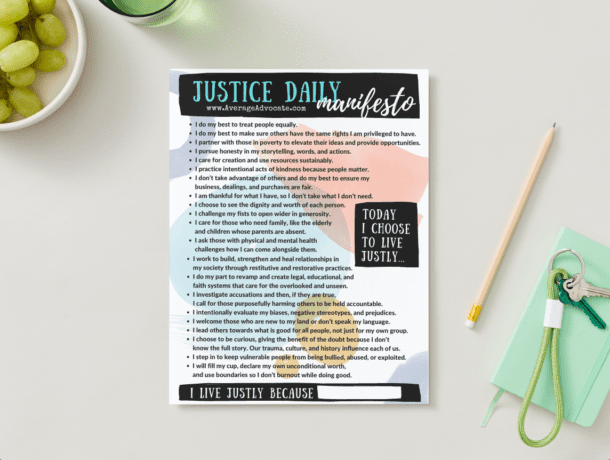The last couple weeks I’ve been diving into the humanitarian crisis on the U.S. border. Do you want to know what is happening with migrants near San Diego? Check out these stories below and consider helping.
Migrants at the Border
During COVID-19, our border was closed and hopeful amnesty-seekers from countries around the world waited on the other side of the Mexican border (often in dangerous or deplorable conditions). In May, Title 42 law was dropped, allowing amnesty seekers to legally pursue safety at our borders once again. There was already a wave of migrants in May, following the conclusion of Title 42. But now, this September, Migrants have been coming through all entries of the border in droves. Although I’ve asked multiple people in the field, there is not one particular reason, but a combination of weather, different global crises, and laws favorable to certain types of amnesty-seekers (such as Venezuelans). But because we lack the necessary infrastructure, this has been a big problem. It is becoming its own humanitarian crisis. Below I will show you two different videos of my experiences volunteering during the last week.
Asylum Seekers on the San Ysidro Border
On Sunday I went to volunteer with a collective of organizations at the San Ysidro civic center, none which usually serve amnesty seekers or refugees. They did a good job working with what they have, but they didn’t have much to work with. When I arrived, I was placed to volunteer at the transportation table. I spent almost three hours working with mostly one man from Senegal (West Africa) using Google Translate and talking with his family in The Netherlands to get him a plane ticket. By the time I left, I still hadn’t found a way to get him to his destination. These little logistics are something I can handle, but they can be almost impossible hurtles if you don’t have a computer, know English, or how to navigate our websites, general U.S. geography, have a U.S. credit card or billing address, etc…
Another man I spoke to was from Sudan. I was supposed to let migrants know they couldn’t stay at the civic center overnight, to see if they had a plan and how we could help them along. When I got to him, he kept saying, “But I am here! I am here.” He was so excited to have reached his destination. Many amnesty-seekers are like him, just trying to get into the United States, often taking harrowing journeys to get here. But once they arrive, they are confronted with the fact that they don’t actually have a place to go, job, direction, support. Many aren’t welcomed. I hated being the harbinger of bad news, to tell this man and his companions that “here,” the civic center on the other side of the Mexico-U.S. border wall, isn’t actually the “here” he dreamed of.
Talking with the migrants after they were proceeded and given papers really helped me see how huge this issue is. Over nine-hundred people went through the day before I was there. Who knows how many came through that Sunday, and the numbers were expected to increase. These migrants have frayed plastic bags for their things, were washing their clothing in the outdoor water-fountain, and had no food. Many of the people coming through are men, true, but there is also a record number of families, women with kids coming, too.
I can’t imagine how these centers around San Diego will keep up with the demand for volunteers. I imagine a lot of unnecessary homelessness will ensue. Others that I know of who work with refugee populations are already taxed. They are looking for people who live here with an extra room to open it just for a night or two so asylum-seekers don’t have to sleep on the streets and are given some dignity.
Watch my video here processing this volunteer experience:
Are There Really Migrants in Outdoor Detention Camps in Jucumba, California?
Only a few days later, I volunteered at the outdoor camps in Jucumba, California, a nothing-town on the edge of the border. “Volunteered” is used loosely. I had been trying to figure out what was going on here for over a week. I was clued in by an organization I know who does water drops in the California desert, Border Kindness, as they began posting things about a camp in the desert. I never heard back when trying to contact them, but people who’d been there replied to my comments on the posts and consistently stated that the need was great, just come.
Go where exactly, though? Where were these “outdoor detention centers?” Border Kindness then posted something about contacting another org, Al Otro Lado, which I had known of, that does other humanitarian work on the border. Neither of them are specifically in the area, but I figured they must be on top of it, as theirs were the only pictures or media I had seen. But I didn’t hear back from them, either. I had blocked off my Friday, though, and was prepared to go if I received an address or directions. A friend of mine (Jen) started planning as if we were going out there too, especially as she was getting donations from her community. Thankfully, there was someone in her area that saw her messages who had explored out there and gotten someone’s number who was on the ground. Jen connected with him, and he gave us a place to bring whatever food, water, and blankets we had collected.
So, on Friday morning, I took the seats down in Rhonda the Honda, and we packed her and Jen’s four-wheeler up. I assumed we would just see the lay of the land, the border wall, and drop stuff off. Maybe, if we were lucky, we’d get to help organize a little. Either way, I might learn something and I believe presence matters. So if dropping off water/food was the best way for me to be present, I was content with that!
How We Became Unintentional Humanitarian Aid Workers at the Migrant Camp
My expectations were totally off. I thought we were going to a large warehouse. In reality it was a big, dusty, abandoned room that was loosely organized in stacks of supplies. No one was there. There were also much less supplies than I thought. And when I found out that they fed three hundred people that morning, I was chagrined to realize the supplies might last only a couple days, maybe three max.
Half way through unloading, a young man came by and asked us if we wanted to help distribute food. Of course we wanted to, but didn’t want to impose, or be a tourist of others’ suffering. It wasn’t until later that I realized if we hadn’t gone, this young guy would have fed hundreds of migrants himself, using whatever they had. Of the supplies we brought, we probably used about a third to half of them. And that was just one meal (not including the three hundred sandwiches that someone else made)! The level of food prep required to feed that many people at a place with no supplies or running water makes my mind spin.
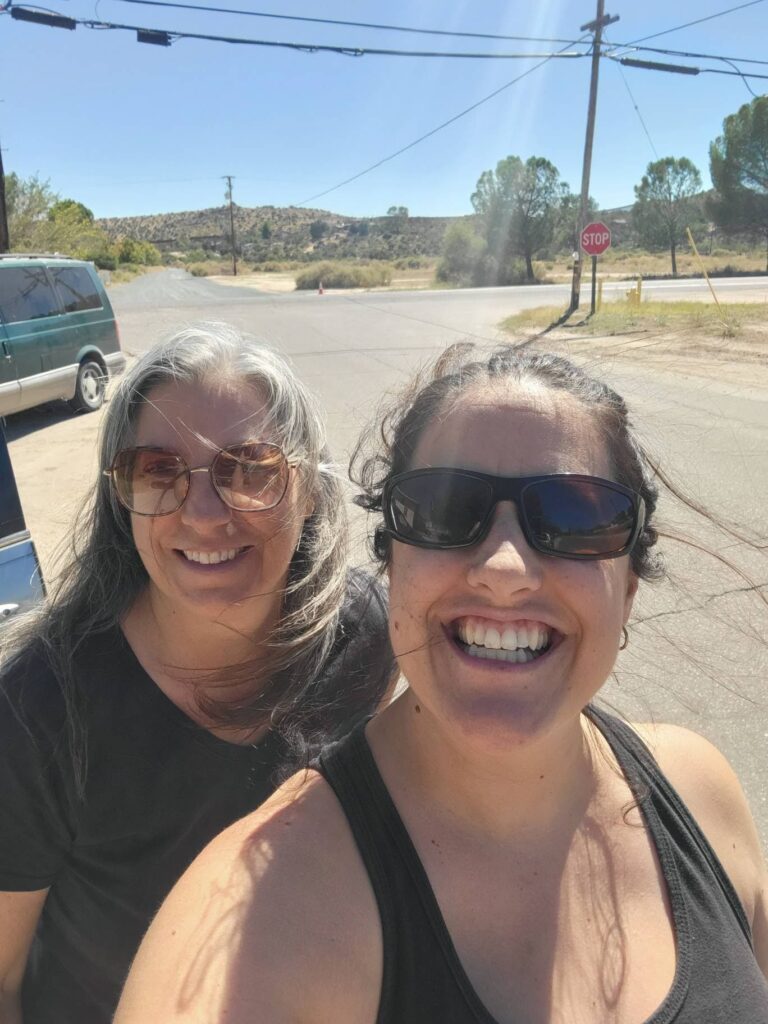
The camp itself was unprecedented. The high desert dirt is light, nearly white and fine. It contrasts with the dark greens of the bushes. The colors are all muted, everything looks the same–the rocks, the bushes, the landscape. I would have never found the camp on my own, down a gravel road, about a mile and a half from the border wall under massive, humming power lines. After a brief conversation with the border patrol agent stationed there, who informed us that children and families had been shipped out since that morning, we parked in a clearing by a big dumpster and two outhouses.
The people started coming. At first, I had now clue where there were coming from. They just manifested. Eventually I realized that what I thought were low trees, large bushes all around us, were actually shelters made out of pine or other branches. Occasionally, you’d see a tarp over one, but mostly, they blended in, camouflaged with the surroundings.
The migrants hailed from all over the globe–Asia, Central America, South America, the Middle East, Africa, Eastern Europe, China, who knows, maybe North Korea! Some stunk really badly–who knows when they last showered! Others might have been covered in dust, but they were wearing nice clothing, they don’t belong in a primitive camp in the desert. I know many of them have been traveling weeks, maybe months.
The women were first in line, and then came the men. I was so grateful the government is prioritizing taking the children out first, even daily after they arrive, often at night. While Kai crawled around in the back of the car, I passed out the “special foods,” each person was able to have one. First were the random drinks we brought, Gatorade being the highest in demand. Once those ran out, I had bagged nuts, granola bars, and other similar things.
I continued to look at the line, a mass of people that I was sure would end. About three-fourths of the way through, I wasn’t sure it ever would end. But it did. I was an accidental humanitarian aid worker, only doing this job for one meal. I couldn’t imagine doing it for hours upon hours.
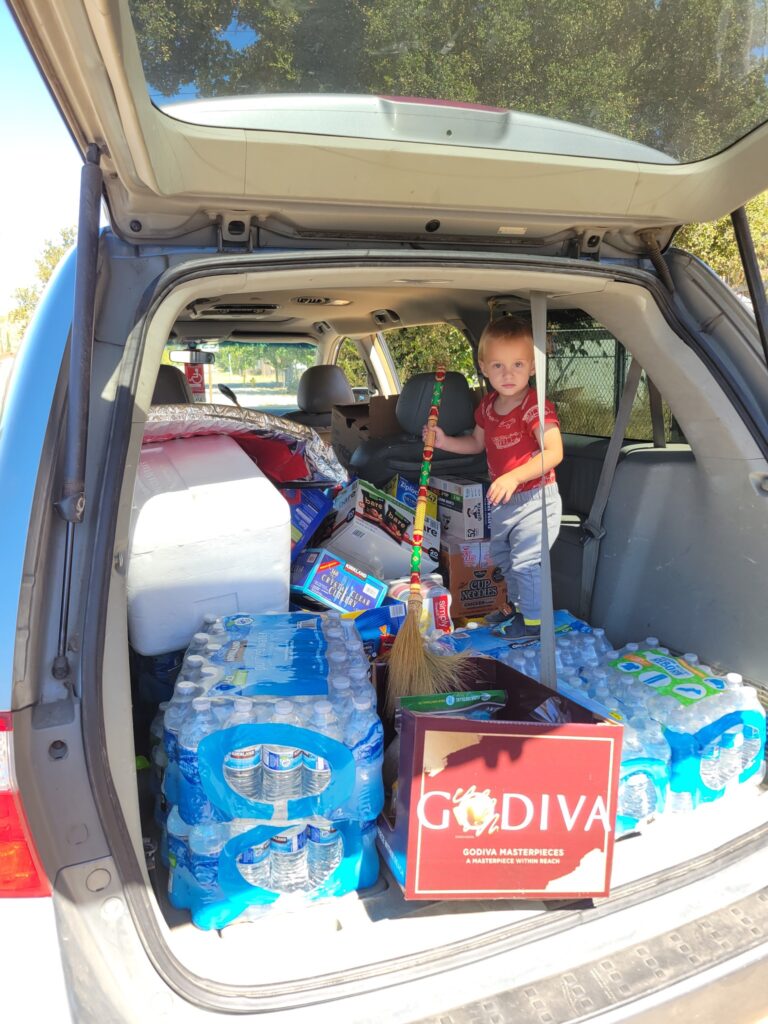
It turns out the reason I hadn’t been hearing back from any of the organizations might have had something to do with a lack of, well, everything. Mostly, it is an older man who lives in Jacumba and his son who are feeding people. He mentioned a few others, one or two from his community, some from those organizations (who are at least trying to supply food/water), or just random people, like us, who happened to come. He had been making sure hundreds were fed three times a day for two weeks.
I asked him if he wanted to make a sign-up to help. He seemed overwhelmed and told me he didn’t want a sign-up, he just needed self-starters and go-getters who would just show up and could just take care of it without having to be told what to do. I understood that desire. No one expects a humanitarian crisis to pop-up in their backyard. Who is ready to just drop their lives, start a nonprofit, and manage volunteers? Even so, me being me, and concerned about changemaking without burning out, I reminded him that what he was doing was anything but sustainable. I wonder what are the best ways to come alongside others through grassroots movements.
Below watch my footage and experience in Jucumba (the video is less than two minutes–share it if you can!)
How to Help Asylum-Seekers and Other Migrants In Jucumba
Before I make a case for what we believe and why our response matters, let me get you started thinking about ways to come alongside these migrants in this largely unaided humanitarian crisis. Here are the ways I can think of to help:
- Bring water, electrolyte drinks, and easy to pass out food to me (or another drop point)
- Collect food/water from your community group (multiply and diversify the sources!)
- Ask businesses to help sponsor food/water
- Donate $ to Border Kindness or Al Otra Lado for the Jucumba camp (they have a wide range of projects, but are currently trying to help cover meals here, or giving supplies to locals to bring to the camp
- Donate cash or venmo to us to shop for stuff (they have to buy food in San Diego area anyway, there aren’t really stores out there)
- Drive out to the drop point to carry supplies and leave them (about an hour from Sna Diego, but depends on where you are)
- Make something to bless the taxed border patrol or primary local volunteers
- Volunteer to distribute meals (not a lot of people are needed at once and as of now there is no organizational structure for this, so we will touch base with someone local first)
- Make a meal for 200-300 people
- This seems to be a great problem. With no cooks, kitchen, or running water, compiling a meal to pass out it a challenge.
- We passed out hundreds of premade sandwiches. But someone made 300 sandwiches! Would you want to invite friends over to make a lot of sandwiches?
- Or if you want to make spaghetti or chili to feed 300 people, then bowls and spoons are also needed.)
- Specifically get 200-300 bananas or apples (local farm or grocery store want to donate these?)
- If you have firewood or ways to make fire safer, that could potentially be brought out there.
- All sleeping bags, tarps, and blankets (except mylar) welcome!
How You Can Help Migrants in Other Parts of San Diego or Elsewhere:
- Volunteer as a responder here, like what my first video was about. These are short one-time 3 hour stints, where anything helps! It is very easy to come on–just sign up! It is worth it!
- If you have an extra room, be a temporary host home–a huge need! World Relief will walk you through it here
- Bring items to asylum-seekers in San Deigo
- Research and call your reps about immigration reform bills (I’ve heard good things about the bipartisan Dignity Act)
- Share this on your social media, on email, or tell people about it, to inviting others to help!
As always, to determine how you can help, think through these three questions on what to do with a need.
What’s Our Why?
One thing we always have to come back to as changemakers is “our why,” otherwise we get caught up in petty disagreements or fights about policy. Although there is a space to discuss policy or whether migrants should or shouldn’t be here, that isn’t the purpose of this article. In fact, based on his commentary, I am pretty sure that one of the other aid workers I talked to had a totally different view on seeking amnesty and immigration that I did. But his words expressed what I felt–that he can’t let people starve or thirst to death in his own backyard.
This is what we care about. Humans beings treated like humans made in the image of God, whether they “deserve” aid or not. Here we are just trying to do for others as we’d like done for us if we were stranded in the desert without food or water. The post is about developing our compassion in response to a reality that could be ours with a turn of the table.
There is a story in Judaism and Christianity that I love in the book of Esther. My friend, Sarah, recently pointed out here how a genocide was planned because of corruption and bias. These two paired together with power almost ended a whole people group, a group of immigrants–captives. They were forced into a space they didn’t want to be. Queen Esther is known for following God, asking her people to stand with her, and bravely standing up at the risk of her life to stop this. Speaking of the little privilege she had, she declared she was there for “such a time as this.”
I wonder if that is why I am here, why those community members are there in Jucumba, and why you are reading this article. Right now, I observe most of the people I know living normal lives, ignorant or indifferent to the influx of humans expanding into the space we inhabit. But we get to be different than the masses if we choose to be. Not for any special or big reason, but just because we choose to not look the other way.
Let’s not look the other way.
(These are phases one through three in the Five Phases of Rising Up. This free guide might help you know how to respond to how you are feeling about this situation!)
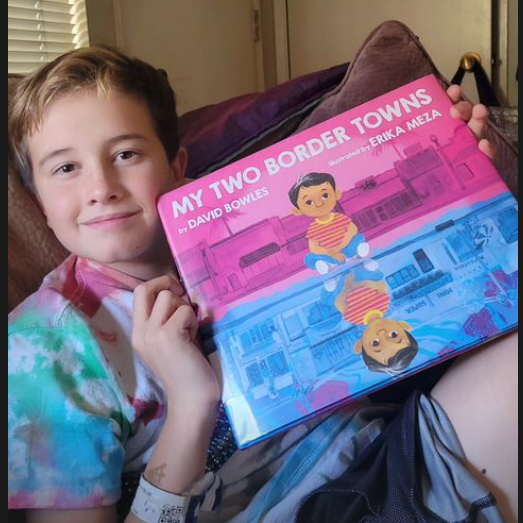
Here is a Book to Raise World Changers!
My Two Border Towns by David Bowles (Author) and Erika Meza (Illustrator) is an excellent short story to help kids view the world where humankind becomes more important than protecting nation states. As a mama, I have a hard time teaching my kids that we deserve better because of where we were born, and cutting off access to opportunity. This book reduces boundaries of the privilege that is so tempting for us to hold onto.
(Full disclosure: above is an amazon affiliate link, like all books on my website are. This doesn’t cost you anything, but helps me stay in business)
